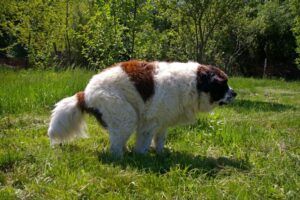When you and your family enjoy the warm weather of spring and summer, don’t forget to take steps to help protect your dog against fleas and ticks.
Recent years have marked the warmest winters and overall weather ever recorded in the continental United States1. While the mild temperatures and early spring weather have been great for getting outside with your pets, it also means an earlier flea and tick season.
Ticks survive the winter in microclimates, and after the thaw a feeding and breeding female tick can lay hundreds to thousands of eggs at one time2. Fleas can survive freezing temperatures on wild or feral animals, cocooned as immature pupae, or inside houses and buildings3. With temperatures in the 50s, 60’s, and even 70s, an early spring also means an early season for these bloodsucking parasites.
It’s practically impossible to keep fleas and ticks completely at bay. But there are some steps you can take to try and minimize the opportunities for contact with your pet.
Difference Between Fleas and Ticks
Fleas
Wildlife, including opossums, coyotes, raccoons, and skunks, and even untreated cats and dogs can deposit flea eggs into a yard. It may be possible to reduce flea infestations by limiting the access these animals have around your house and yard. Your local nursery or garden professional may have some advice on what to plant or other strategies to discourage animal trespassers.
Ticks
It can be helpful for pet owners to alter the landscape around their homes to make it unsuitable for ticks and their hosts. For example, keep the lawn mowed, remove leaf litter accumulations and prune shrubs and trees.4
Contact a professional pest specialist if you have any questions regarding environmental treatments for ticks.
Use a Flea and Tick Control Product
Despite your efforts to reduce the fleas and ticks in your yards, our pets may still be exposed to these parasites, so you should take measures to help protect them. Treat all dogs and cats in the household with a flea and tick control product. One untreated pet can lead to a flea infestation in the household. Topical products can help protect your dog from unexpected flea and tick sources by killing adult fleas, eggs and larvae, and all stages of ticks.
Consistency is key. Even one missed dose of your monthly flea and tick control can set the stage for a flea infestation that takes months to resolve, or put your pet at greater risk of exposure to a tick borne disease. So be sure you treat your pet now and continue monthly applications throughout the rest of the year.
- 1. State of the Climate Report: National Overview February 2012. National Climatic Data Center Web site. Accessed March 8, 2012.
- 2. Stafford K. Tick Management Handbook. New Haven, CT: the Connecticut Agriculture Experiment Station; 2007.
- 3. Rust M, Dryden M. The Biology, Ecology, and Management of the Cat Flea. Annu. Rev. Entomol. 1997; 42:451–73
- 4. Bladburn BL, et al. Biology, treatment and control of flea and tick infestations. Vet Clin Small Anim. 2009:39:1173-1200.











